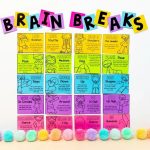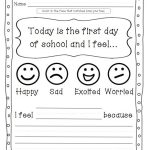10 Tips for Organizing Your Teacher Planner
Introduction:
A teacher planner is an essential tool for teachers to stay organized and ensure a smooth workflow throughout the academic year. Properly organizing your teacher planner can greatly enhance your productivity and help you effectively manage your time. In this article, we will provide you with ten valuable tips to help you organize your teacher planner efficiently.
1. Establish a Routine:
Create a habit of consistently updating your teacher planner at the same time each day. It is crucial to designate a specific time for planning and recording important tasks, deadlines, and events. By following a routine, you will build a consistent planning practice and reduce the chances of missing any vital information.
2. Categorize:
Divide your teacher planner into different sections based on your needs and preferences. You can allocate sections for lesson planning, student information, assessment schedules, and professional development. Categorizing your planner will allow you to easily locate specific information when needed.
3. Prioritize your Tasks:
Utilize a system to prioritize your tasks. You can use color-coding or symbols to indicate the urgency or importance of each task. This will help you stay focused and ensure that you tackle the most critical tasks first.
4. Utilize Technology:
Incorporate digital tools and apps to complement your teacher planner. Online calendars, reminder apps, or productivity software can assist you in setting reminders, sending notifications, and syncing data across devices. Such tools can streamline your planning process and provide real-time updates.
5. Delegate and Collaborate:
If possible, involve your fellow teachers or support staff in your planning process. Delegating and collaborating can distribute the workload and create a sense of shared responsibility. It also enables you to gain valuable insights and ideas from your colleagues.
6. Maintain a To-Do List:
Alongside your teacher planner, maintain a separate to-do list to capture daily tasks and quick reminders. This list will allow you to focus on immediate tasks without cluttering your planner. Regularly transfer important to-do items from the list to your planner.
7. Include Personal Time:
While it is essential to prioritize your teaching responsibilities, it is equally important to include personal time in your teacher planner. Block out time for self-care, relaxation, and pursuing personal interests. Balancing work and personal life is crucial for your overall well-being.
8. Reflect and Evaluate:
At regular intervals, review and reflect on your planner. Assess the effectiveness of your planning strategies and make necessary adjustments. Identifying patterns in your workflow can help you optimize your teacher planner for improved productivity.
9. Use Visual Aids:
Incorporate visual aids, such as stickers, labels, or colored pens, to make your teacher planner visually appealing and engaging. These elements can make your planner more exciting to use and help differentiate between different tasks or sections.
10. Update and Adapt:
As the academic year progresses, your planning needs may change. Stay flexible and be open to adapt your planner to suit evolving requirements. Regularly update and refine your organization system to align with your teaching goals and evolving classroom dynamics.
Conclusion:
A well-organized teacher planner is a valuable asset for every educator. By implementing these ten tips, you can optimize your planning process, stay on top of your teaching responsibilities, and create a balanced and structured classroom environment. Remember, an organized teacher is an effective teacher!


